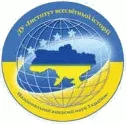Основні проблеми зовнішньої політики Ісламської Республіки Іран на Кавказі (в іранській історіографії)
##plugins.themes.bootstrap3.article.main##
Анотація
Після розпаду СРСР регіональні держави Кавказу зіткнулися з серйозними політичними і економічними проблемами. Слід зазначити, що деякі фундаментальні проблеми, що існують в
регіоні, можуть бути пов’язані з різними історичними і соціальними чинниками, які можна аналізувати в рамках проблем, пов’язаних з країнами третього світу. Останні події в регіоні,
включаючи територіальні суперечки, економічні та військові кризи, безпеку і стратегічні інтереси в регіоні, привернули увагу великих регіональних і глобальних гравців, таких як США,
ЄС, Російська Федерація, Туреччина, Іран, Ізраїль, Пакистан, Чечня і Саудівська Аравія. Наприклад, США розглядають регіон Кавказу і Каспійського моря як область своїх
стратегічних, економічних і життєво важливих інтересів. Ісламська Республіка Іран (ІРІ) як південний сусід країн Кавказу вважається одним з головних регіональних гравців. Історичні,
політичні, культурні та географічні зв’язки з країнами регіону, крім першорядних і нагальних питань, є найбільш фундаментальними факторами регіональної політики Ірану. Більш того, засновані на ідеології і засади внутрішньої і зовнішньої політики ІРІ підготували грунт для
подальших відносин, конфронтації, конфліктів і коаліцій з країнами регіону.
Завантаження
##plugins.themes.bootstrap3.article.details##
Посилання
افشردی محمدحسین. ژئوپولیتیک قفقاز و سیاست خارجی جمهوری اسلامی ایران, تهران، دانشکده فرماندهی و ستاد سپاه, چاپ اول, 1381، 511 ص. (Afshordi Mohammad Hossein. Geopolitics of Caucasus and Islamic Republic of Iran’s Foreign Policy. Tehran: Islamic Revolution Guard. Headquarter and Commanding Faculty, 2002.)
امیر احمدیان بهرام .جغرافیای قفقاز, تهران, موسسه ی چاپ و انتشارات وزارت امور خارجه، چاپ اول، 1376(Amir Ahmadian Bahram. Geography of Caucasus. Tehran: Foreign Ministry Publication Institute.1997).
امیراحمدیان بهرام. امنیت جمهوری آذربایجان و ناتو, فصلنامه ی مطالعات آسیای مرکزی و قفقاز، شماره 42، 1382. (Amir Ahmadian Bahram. Security of Azerbaijan and NATO. Central Asia and Caucasus Quarterly, No.42, 2003)
بیانات وزارت امور خارجه در خصوص محکومیت تجاوز ارمنستان به خاک آذربایجان. روزنامه کیهان 23/5/1372. (Statement of Foreign Ministry about Condemning Aggression of Armenia to Azerbaijan’s Territory. Keyhan Newspaper, 1372/5/23.)
رائین اسماعیل. قتل عام ارمنیان. تهران، چاپ حیدری، چاپ دوم، 1351، 274 ص. (Rain Esmail. Armenians’ Massacre. Tehran: Heydari Publication. 2nd Impression, 1351, pp. 6-63)
رمضانی روح الله. چهار چوبی تحلیلی برای سیاست خارجی جمهوری اسلامی ایران, ترجمه علیرضا طیب, تهران, نشر نی, چاپ اول, 1380, 214 ص. (Ramezani Ruhollah. Analytical Framework for Islamic Republic of Iran’s Foreign Policy. Translated by: Alireza Teib. Tehran: Nei Publication, 1st Impression, 2001.)
روزنامه اطلاعات 15/4/1385. شماره 23669(Ettelaat Newspaper, 1385/4/15. No.23669.).
سجاد پورسید محمد کاظم. سیاست خارجی جمهوری اسلامی ایران, تهران, دفتر مطاعات سیاسی و بین المللی, چاپ اول,1381, 187 ص. (Sajjadpoor Seyyed Mohammad Kazem. Iran’s Foreign Policy. Tehran: Foreign Ministry Political and International Studies Bureau. 1st Impression, 2002.)
سرداری نیا صمد. قتل عام مسلمانان در دو سوی ارس، تبریز، نشر اختر، چاپ سوم، 1383، 211 ص. (Sardarinia Samad. Massacre of Muslims in Two Sides of Aras. Tabriz: Akhtar Publication. 10th Impression, 2004.)
شیفر برندا. مرزها و برادری, ایران و چالش هویت آذربایجانی, ترجمه یاشار صدقیانی, تهران, نشر اولوس, 1385, 255 ص.(Shafer Brenda. Borders and Brotherhood. Iran and the Challeng of Azerbaijanian Identity. Translated by: Yashar Sadaghiani Azar. Tehran University: Ulus Publication, 1st Impression, 2006.)
قانون اساسی جمهوری اسلامی ایران ، فصل دهم. (Islamic Republic of Iran’s Constitution, chapter 10.)
محمدی منوچهر. اصول سیاست خارجی جمهوری اسلامی ایران, تهران, انتشارات امیرکبیر, چاپ اول، 1366, 159 ص. (Mohammadi Manoochehr. Principles of Islamic republic of Iran’s Foreign Policy. Tehran: Amir Kabir Publication.1987.)
هاشمی غلامرضا. قفقاز و قدرتهای فرامنطقه ای, فصلنامه مطالعات آسیای مرکزی و قفقاز، شماره ی 42، تابستان 1382. (Hashemi Gholamreza. Caucasus and Ultra Regional Powers. Central Asia and Caucasus Studies Quarterly. Number 42, summer 2003.)
هرزیگ ادموند. ایران و حوزه جنوبی شوروی سابق, ترجمه: کاملیا احتشامی اکبری, تهران, دفتر مطالعات سیاسی و بین المللی, 1375, 85 ص. (Herzig Edmond. Iran and Southern District of Former Soviet Union. Translated by: Camelia Ehteshami Akbari. Tehran: Foreign Ministry Political and International Studies Bureau. 1996.)
Fairbanks Charles and others. Strategic Assessment of Central Eurasia. Washington D.C: The Atlantic Council of United States, January 2001.
İbrahimli Xallədin. Yeni Avrasiya Qafqazı. Xəzər Universiteti nəşriyyatı, Bakı: 2000.
S. Islam, “Capitalism on the Silk Route?” in M. Mandelbaum (ed), Central Asia and the World (New York: Council on Foreign Relations Press, 1994), pp. 147-76.

